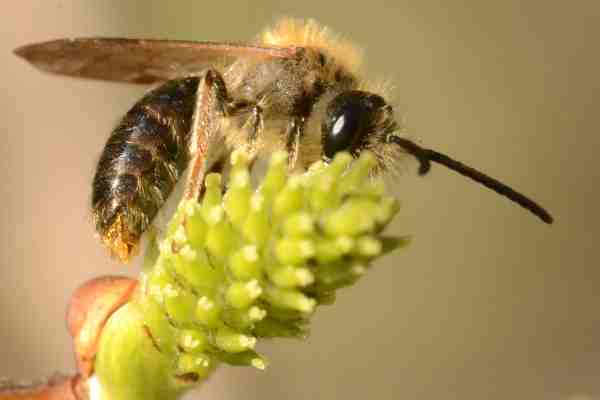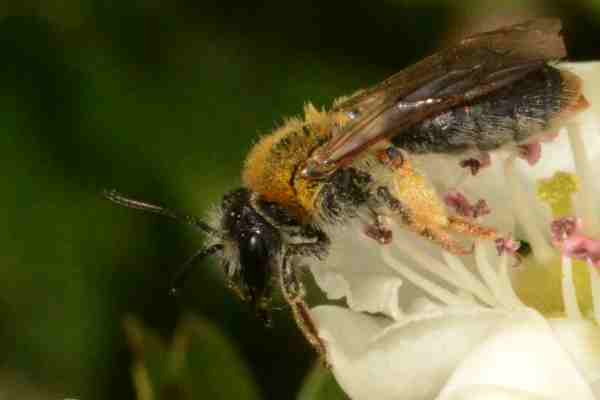
Male |

Female |

Male |

Female |
Length: Male 9-11mm, Female: 10-12mm;
Forewing Length: Male 7-9mm, Female 8-10mm
| Egg | Larva | Pupa | Adult |
| ? | ? | ? | March - June (Earliest: 31.3) (Winter) |
| Attractant Chemicals | |||||
|---|---|---|---|---|---|
| Sesquiterpenoids | Farnesene, Farnesol, Farnesyl Hexanoate | ||||
| Fatty Alcohols | Hendecanol, Tridecanol | ||||
Atlas Hymenoptera: Andrena haemorrhoa
Belgium,
Europe
BWARS:
Andrena haemorrhoa
Nature Spot:
Early Mining Bee - Andrena haemorrhoa
Dutch Bees and their Relations:
Andrena haemorrhoa
Wildbienen:
Sand- bzw. Erdbienen: Andrena haemorrhoa
Insektenbox:
Rotschopfige Sandbiene
Pictures © 2003, 2015 J.K. Lindsey
Back to Ecology of Commanster